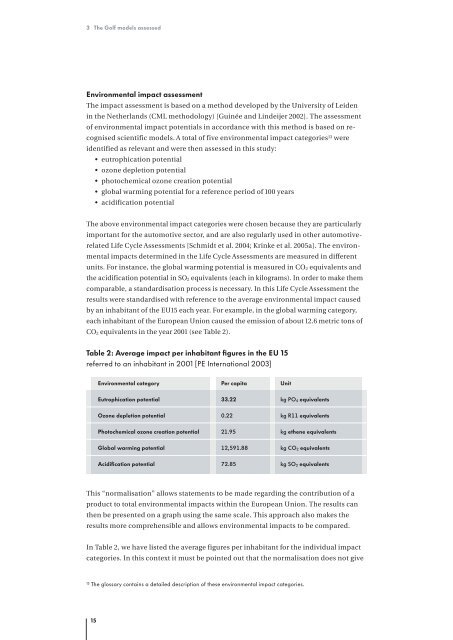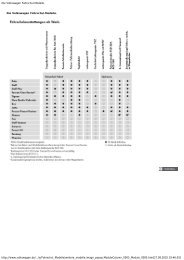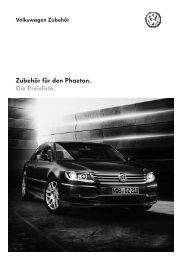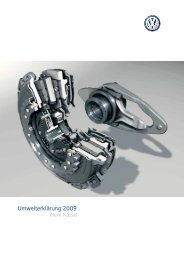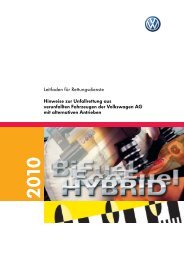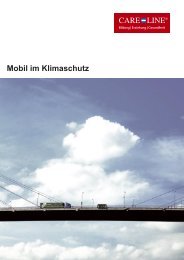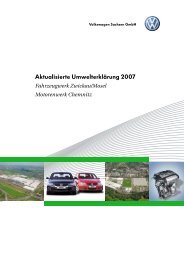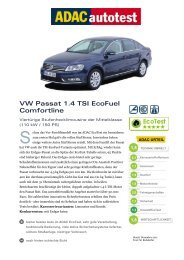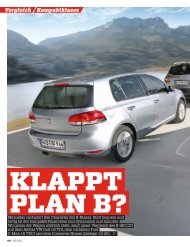Detailed Version - Volkswagen AG
Detailed Version - Volkswagen AG
Detailed Version - Volkswagen AG
You also want an ePaper? Increase the reach of your titles
YUMPU automatically turns print PDFs into web optimized ePapers that Google loves.
3 The Golf models assessed<br />
Environmental impact assessment<br />
The impact assessment is based on a method developed by the University of Leiden<br />
in the Netherlands (CML methodology) [Guinée and Lindeijer 2002]. The assessment<br />
of environmental impact potentials in accordance with this method is based on recognised<br />
scientific models. A total of five environmental impact categories13 were<br />
identified as relevant and were then assessed in this study:<br />
• eutrophication potential<br />
• ozone depletion potential<br />
• photochemical ozone creation potential<br />
• global warming potential for a reference period of 100 years<br />
• acidification potential<br />
The above environmental impact categories were chosen because they are particularly<br />
important for the automotive sector, and are also regularly used in other automotiverelated<br />
Life Cycle Assessments [Schmidt et al. 2004; Krinke et al. 2005a]. The environmental<br />
impacts determined in the Life Cycle Assessments are measured in different<br />
units. For instance, the global warming potential is measured in CO2 equivalents and<br />
the acidification potential in SO2 equivalents (each in kilograms). In order to make them<br />
comparable, a standardisation process is necessary. In this Life Cycle Assessment the<br />
results were standardised with reference to the average environmental impact caused<br />
by an inhabitant of the EU15 each year. For example, in the global warming category,<br />
each inhabitant of the European Union caused the emission of about 12.6 metric tons of<br />
CO2 equivalents in the year 2001 (see Table 2).<br />
Table 2: Average impact per inhabitant figures in the EU 15<br />
referred to an inhabitant in 2001 [PE International 2003]<br />
Environmental category<br />
Eutrophication potential<br />
Ozone depletion potential<br />
Photochemical ozone creation potential<br />
Global warming potential<br />
Acidification potential<br />
Per capita<br />
33.22<br />
0.22<br />
21.95<br />
12,591.88<br />
72.85<br />
This “normalisation” allows statements to be made regarding the contribution of a<br />
product to total environmental impacts within the European Union. The results can<br />
then be presented on a graph using the same scale. This approach also makes the<br />
results more comprehensible and allows environmental impacts to be compared.<br />
In Table 2, we have listed the average figures per inhabitant for the individual impact<br />
categories. In this context it must be pointed out that the normalisation does not give<br />
13 The glossary contains a detailed description of these environmental impact categories.<br />
15<br />
Unit<br />
kg PO4 equivalents<br />
kg R11 equivalents<br />
kg ethene equivalents<br />
kg CO2 equivalents<br />
kg SO2 equivalents


